In the United States alone, a child is injured from falling from a high chair every hour. Parents might be overprotective with their kids when it comes to playing outside the house, but hidden dangers can be also found in seemingly safe places for kids like playgrounds or even at home.
Bright Side gathered a list of all those things that might look safe, but in reality, can be potential dangers for your child. Keeping in mind that our treasured toddlers need our 24/7 supervision, this list will give you a heads up on what other things you need to beware of in order to protect your little ones.
1. Letting them play dangerous sports
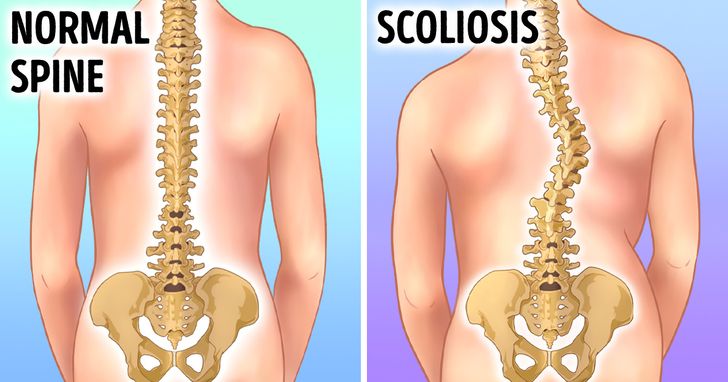
There are numerous advantages for kids who are practicing sports, but there is also a specific list of high-impact sports that can be potentially dangerous for them. The “big 6” to avoid, as forensic pathologist Dr. Bennet Omalu advises, are American football, ice hockey, mixed martial arts, boxing, wrestling, and rugby. During these sports, a child receives multiple blows to the head, which have the risk of exposure to brain damage, according to neuroscientists.
Also, high-impact activities can cause significant compression of the spine and hyperextension of the back that can lead to serious injuries. The repeated engagement in these sports can aggravate scoliosis over time. Squatting, lifting weight over the head, hard landings like in cheerleading, and long-distance running should be avoided.
2. Letting them sit in a W position
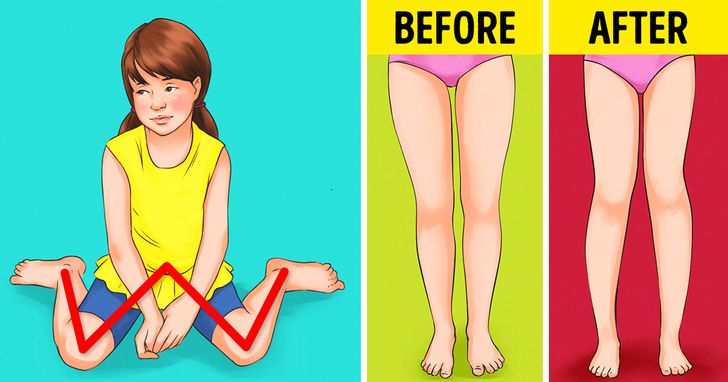
The W position is a really common way kids choose to sit when playing on the floor especially because it’s comfortable for them. However, it is probably the most dangerous position for children to adopt and doctors advise parents to discourage their kiddos from sitting like this.
Moreover, osteopath Avni Trivedi stated during an interview that this position has become “a new health epidemic” that can highly impact a child’s development in their leg joints and hip bones, weaken their trunk muscles, and place extra pressure on their back, neck, and shoulders.
3. Giving them tablets (especially toddlers)
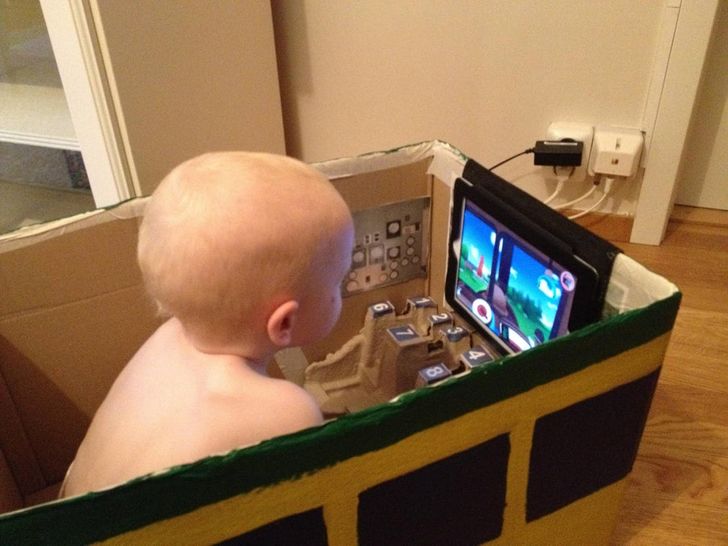
Kiddos spend more and more time in front of screens, especially their favorite new toy, the tablet. Doctors warn parents to reduce “screen time” as much possible because of the blue light, a portion of harmful light that these screens emit.
Common symptoms of overexposure to blue light are headaches, neck and shoulder pain, dry or irritated eyes, but also psychological ones like reduced attention span, poor behavior, and irritability. It can also affect their sleep and wake cycle, making them feel tired and exhausted.
4. Letting them go down the slide on your lap
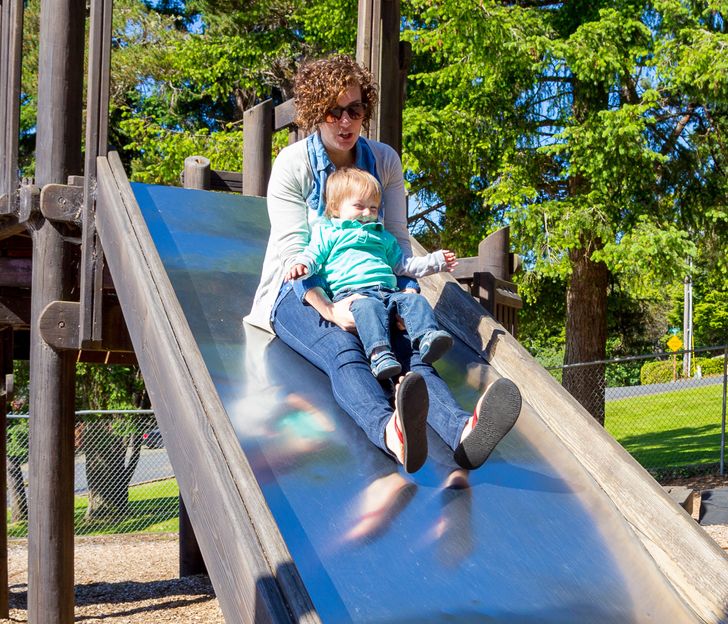
Most parents think that when they are on the playground with their kiddos, it’s safer to go down the slide with their child on their lap. Actually, this is an extremely hidden playground danger that can cause leg fractures in children.
As pediatrician Dr. Diane Arnaout explains, the parent’s weight pushes everything downward at a higher speed, so in the case that any part of the kid’s shoe or arm sticks out of the slide, the leg or arm could twist and break.
5. Playing the Chubby Bunny game with your kids
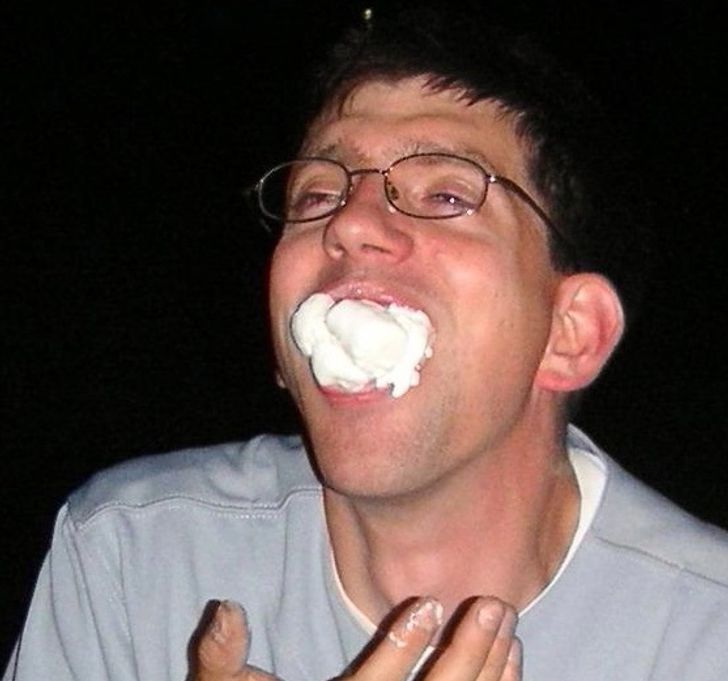
Chubby Bunny is a very popular challenge kids usually do with their parents, where they have to place an increasing number of marshmallows in their mouth while stating the phrase “chubby bunny” as clear as possible.
Even though kids might find it extra fun and tasty, since they get to consume their favorite dessert after the game is over, this is a dangerous challenge and several incidents of chocking have occurred.
6. Standing on chairs
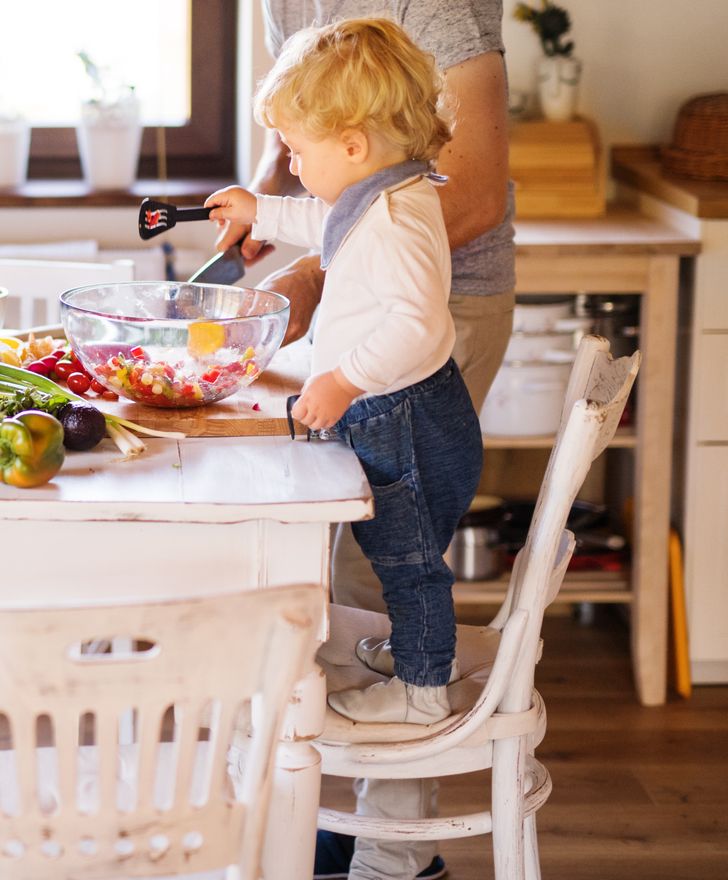
This is one of the most common reasons for children’s injuries, especially among toddlers. Kids are unstoppable, and they usually want to climb everything, including chairs. Falling from high chairs, in particular, is the main cause of head trauma and concussions.
Specialists advise parents to strap their kids into meal chairs, not allowing them to stand up, and also to always supervise them because there is always a possibility for the child to kick off from the table and knock over their chair.
7. Playing in the dirt
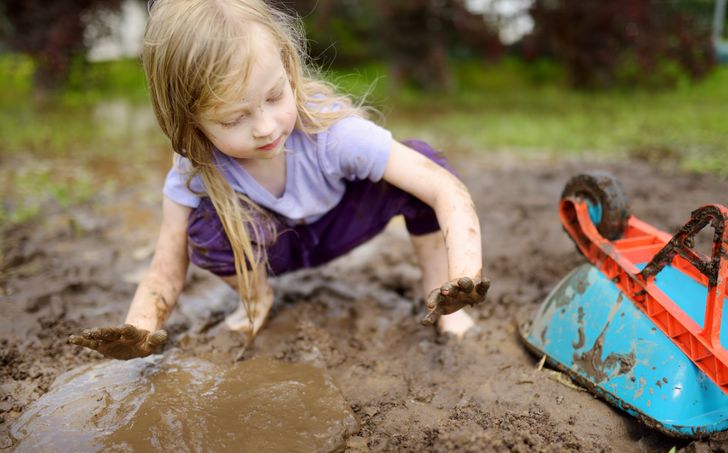
Kids love to get all dirty playing outdoors. What needs to be considered carefully though is where they play, because digging and playing with dirt can be extremely harmful to children. The main cause is lead and it’s dangerous effects on our health.
Even though lead paint in houses has been banned, there are still places with peeling lead paint like barns, garages, and old housing. Children might be exposed to that from bare soil since lead has been found in yards that were near those places. Lead itself is a poisonous metal that can cause brain damage and life-long problems.
8. Jumping on trampolines
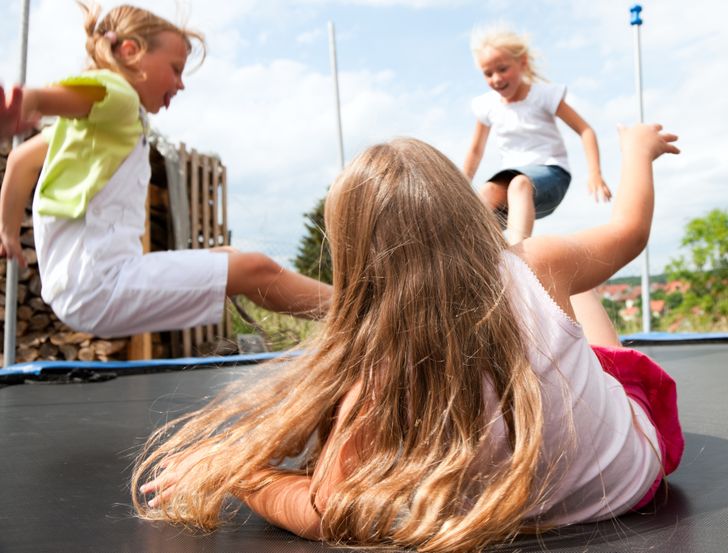
Many parents have installed trampolines, both big and small, in their yards and their kids adore them. This seemingly funny and innocent jumping apparatus can be seriously harmful to children.
According to the American Academy of Pediatrics’ instructions, trampolines shouldn’t be in any home with kiddos. This is because injuries caused by jumping on them happen really often and include broken bones, head injuries, like concussions, and harsher trauma that can lead to permanent brain damage and even death.
9. Mowing the loan with them
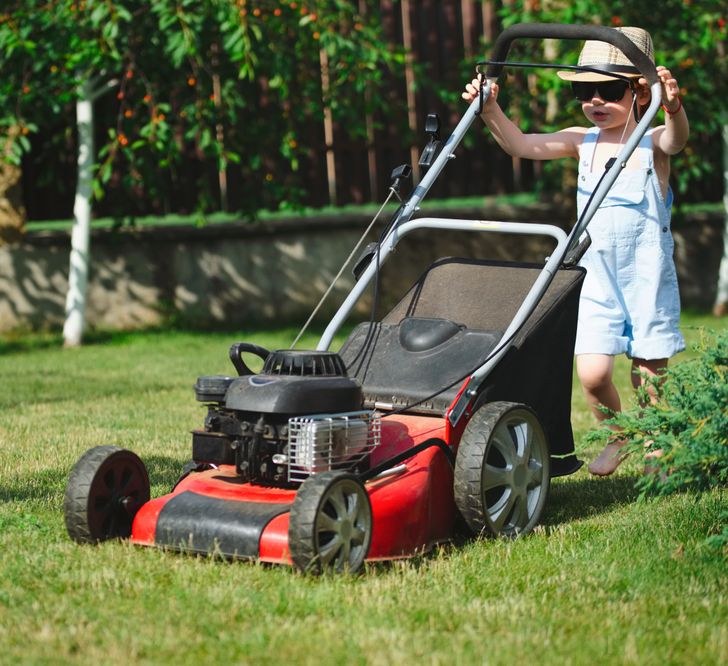
Both pushing and riding lawnmowers are heavy and extremely dangerous machines and can easily harm a young child who will probably want to come closer and see how it works. From cases involving kids falling from dad’s lap and getting injured to kids getting trapped under the heavy machinery to having eye injuries from the cut grass, this is not something you want your kid around.
According to HealthyChildren.org, in the United States alone “more than 9,000 children go to the emergency room for lawn mower-related injuries every year.” Children should stay inside the house as a precaution and be sure that neighborhood children aren’t around either.
10. Climbing on outside equipment
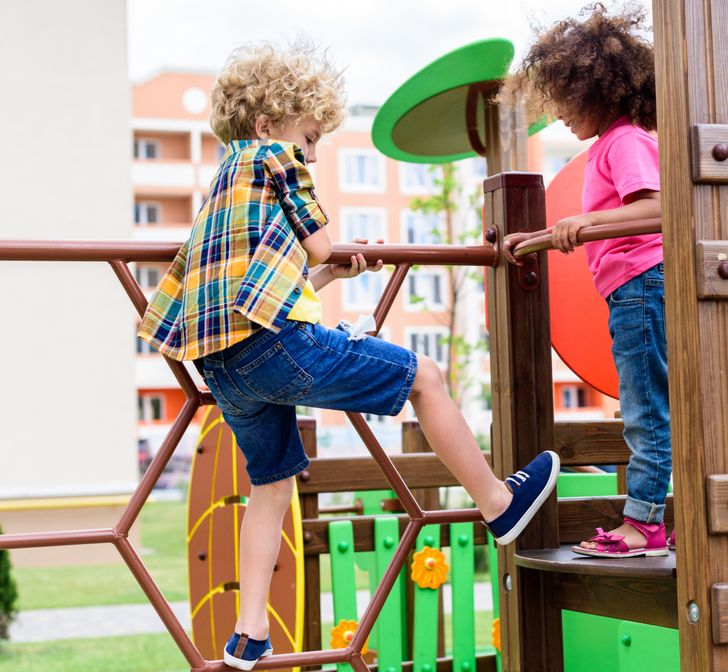
Playgrounds are children’s and parents’ favorite destination, however, continuous supervision is needed in order for kids to return safely home.
According to the Centers for Disease Control and Prevention, more than 200,000 cases of children injured on the playground, some of which are fatal, end up in the ER every year in the USA alone. Most of them are caused by climbing. Even though it looks fun and athletic, climbing is one of the most common causes of falls and serious injuries.
11. Riding a bike without a helmet
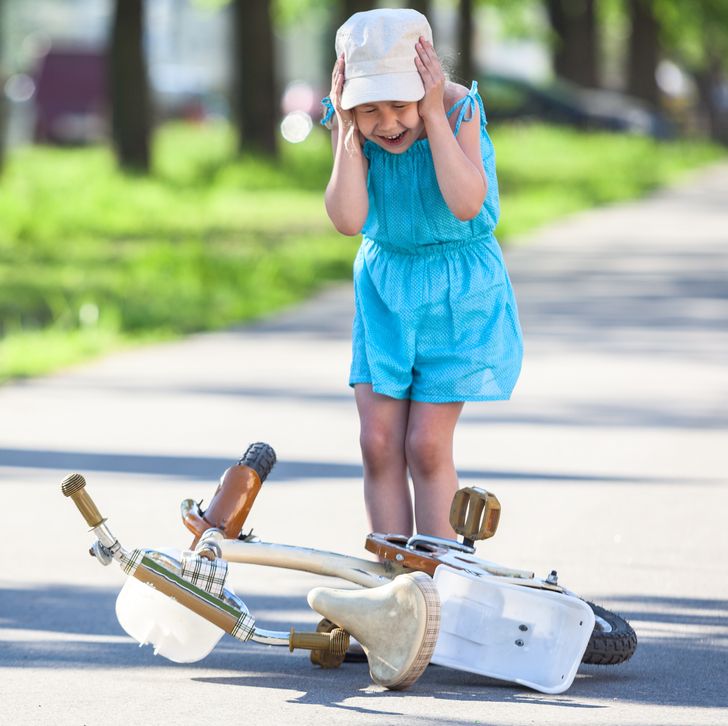
It’s no surprise that cycling is one of the kids’ favorite activities since it gives them a sense of independence, freedom, and fun — exactly what they want. However, riding a bike can be dangerous when riding irresponsibly, especially for kiddos.
What applies to adults, of course, applies to children too. Wearing a helmet is the number one safety rule since it protects the head in case of a fall. Wearing one can prevent brain injuries and severe trauma. It is also important to never let your kid ride unsupervised. Cycling can be a great family activity, so be a good example and ride along with them with your helmet on.
We hope that this selection of potential dangers will help you and your kids enjoy a safer daily life. Are you an overprotective parent? What was the most dangerous adventure you got into as a kid? Tell us your stories in the comments.
If you see a purple butterfly sticker near a newborn, you need to know what it means

Only weeks after Millie Smith and Lewis Cann learned they were having twin baby girls, they learned that only one would survive.
On April 30, after 30 weeks of a high-risk pregnancy, Smith delivered identical twins, Callie and Skye, the latter who lived only three hours.
Later in neonatal intensive care unit (NICU), Callie slept without her sister in the incubator, with her loving and grieving parents watching over her. In the unit with other babies, an overwhelmed mom of healthy newborn twins innocently told Smith that she was “so lucky” to not have two babies.
Crushed by the words, the new mom couldn’t find the words to explain her loss. Then, she realized that Skye’s legacy was to help other families who lose a child, and it came in the form of a purple butterfly.
In November 2015 Millie Smith and partner Lewis Cann found out they were having their first Child. Smith, who has twins in the family, said she had a “gut feeling” about having a duo and 10 weeks later, doctors confirmed she was expecting identical twin girls.
Less than two weeks after the excitement of knowing they would double the children in their home, the British couple were devastated to learn that one of their babies had a fatal condition and wouldn’t survive after birth.
“During the scan, the doctor didn’t say anything. I was very excited and loved seeing the little babies, but she was silent. Both Lewis and I immediately knew there must be a problem,” Smith said.
Doctors shared the news that one of the babies had anencephaly, which according to the Centers for Disease Control and Prevention (CDC) affects about one in 4,600 babies across the U.S. It’s a serious birth defect where a baby is born without parts of the brain and skull, and “almost all babies born with anencephaly will die shortly after birth.”
Knowing that one baby would die soon after birth, and that there were risks involved for their other baby, the couple decided to move forward with the extremely high-risk pregnancy.
Over the next several months, Smith and Cann named their twins Skye and Callie. “We knew that Skye needed to have a name before she was born,” Smith said. “Knowing she would only survive for seconds or minutes, I wanted her to be named during that time.”
The meaning behind “Skye,” she explained “was somewhere we knew she would always be, that we could look up at the sky and remember our baby.”
When Smith went into labor after only 30 weeks on April 30, she needed an emergency C-section. To help navigate the loss, the couple had a “bereavement midwife” during the birth, and they were put I a special room the called the “Daisy Room,” where families can spend time with a baby before and after she/he passes.
“When the girls were born, they both cried. This was a huge moment, as we were told that Skye would not make a noise or move,” said Smith, who was thankful to have three hours with Skye before she died. “We were cuddling Skye when she passed away. This was the worst moment in our lives. I have never ever felt heartbreak like that before. But I am proud that she fought for so long to spend time with us.”
Born premature, Callie had to stay in NICU while she gained some strength and also in the unit were three other sets of twin.
“Most of the nurses were aware of what had happened, but as time passed, people stopped talking about Skye. After about four weeks, everyone acted as though nothing had happened, meaning the families around me had no idea about our situation,” Smith recalled.
One morning, a stressed mother whose twins were also in NICU, harmlessly said to Smith that she was “so lucky” to not have twins.
“None of the other parents knew what had happened or anything about Skye. The comment was completely innocent and more out of humor…They weren’t to know that I did at one point have two.” Smith continued, “But the comment nearly broke me. I ran out [of] the room in tears and they had no idea why. I didn’t have the heart to tell them what had happened. A simple sticker would have avoided that entire situation.”
It was in that moment Smith realized she had to create something that would speak for parents who had just lost a baby, ensuring the misunderstanding never happens again.
She designed a poster for the NICU explaining both hospital personnel and visitors that any incubator with a purple butterfly on it means that one or more babies, in a set of multiples were lost.
“I chose butterflies, as I felt it was fitting to remember the babies that flew away, the color purple because it is suitable for both boys or girls,” said Smith.
The purple butterfly concept–now under the Skye High Foundation–has spread to hospitals in several countries around the world.
Callie is now a lively, happy seven-year-old, and twin’s memory lives in purple butterfly cards along with other initiatives to help families with babies like Skye all over the world. The purple butterflies now come in numerous forms, like ornaments, cards, blankets, stuffed animals and more.
“Ultimately I will never be able to stop this from happening but the more support groups we can set up and put things in place like the stickers the better it will be. It’s the hardest thing anyone has to deal with,” Smith said.



Leave a Reply